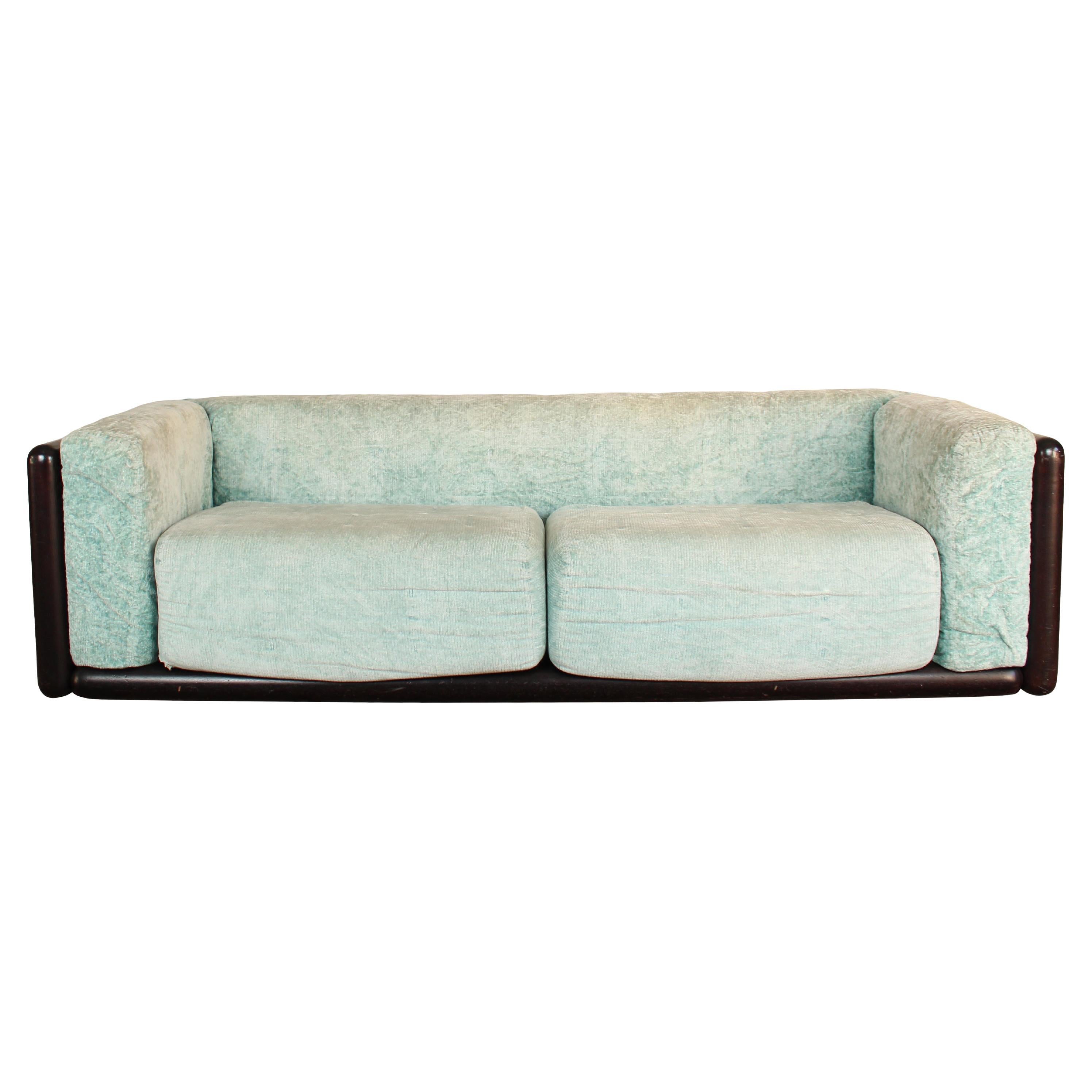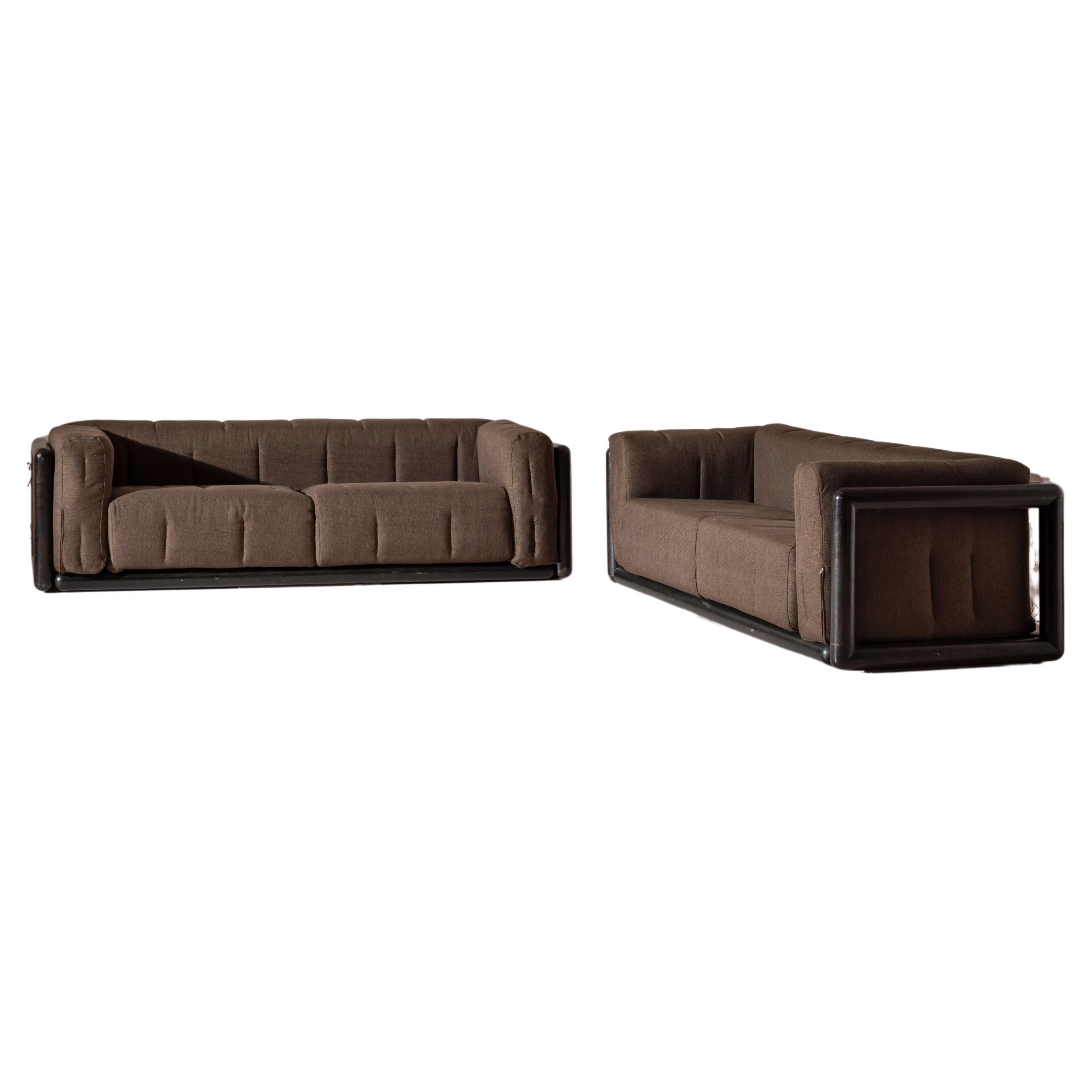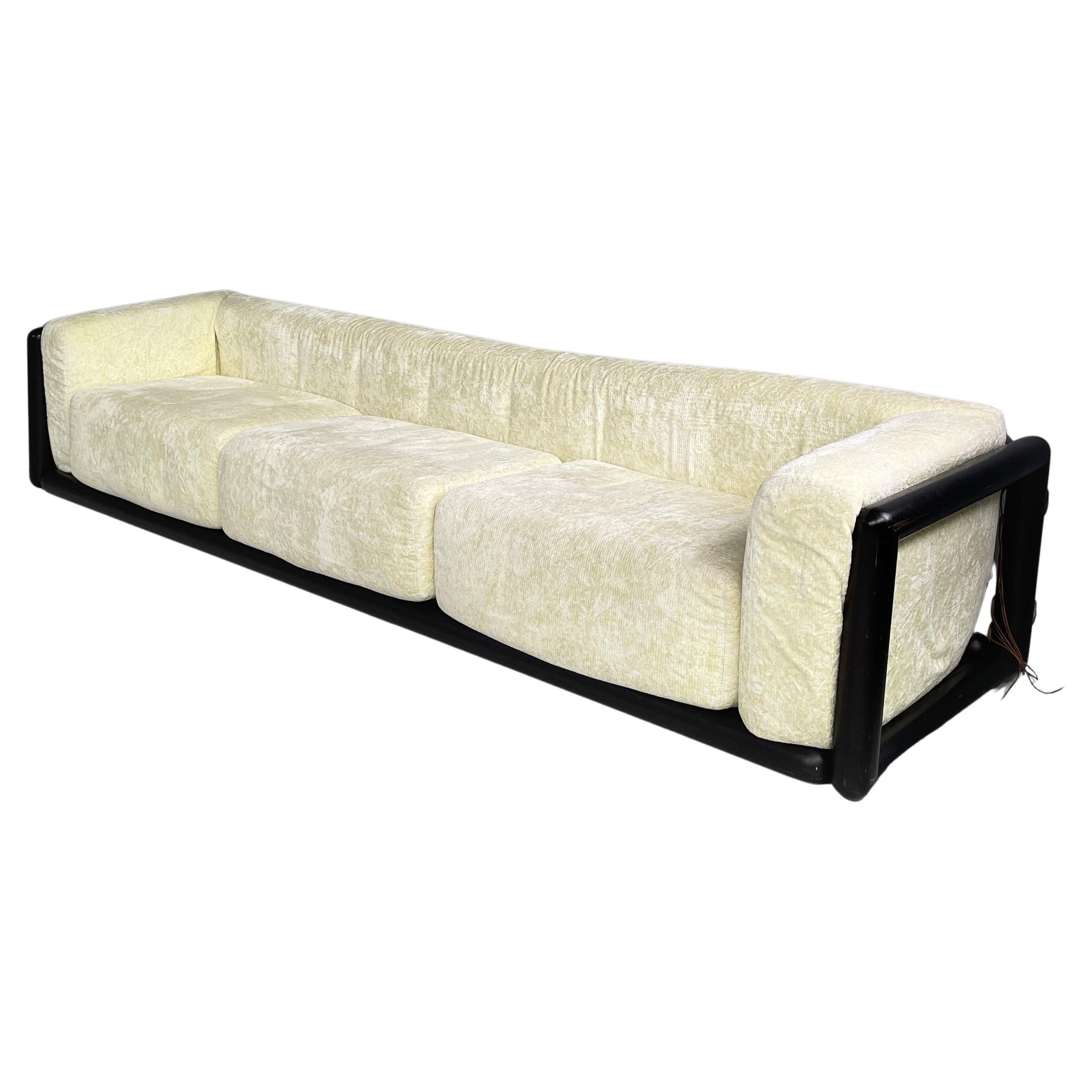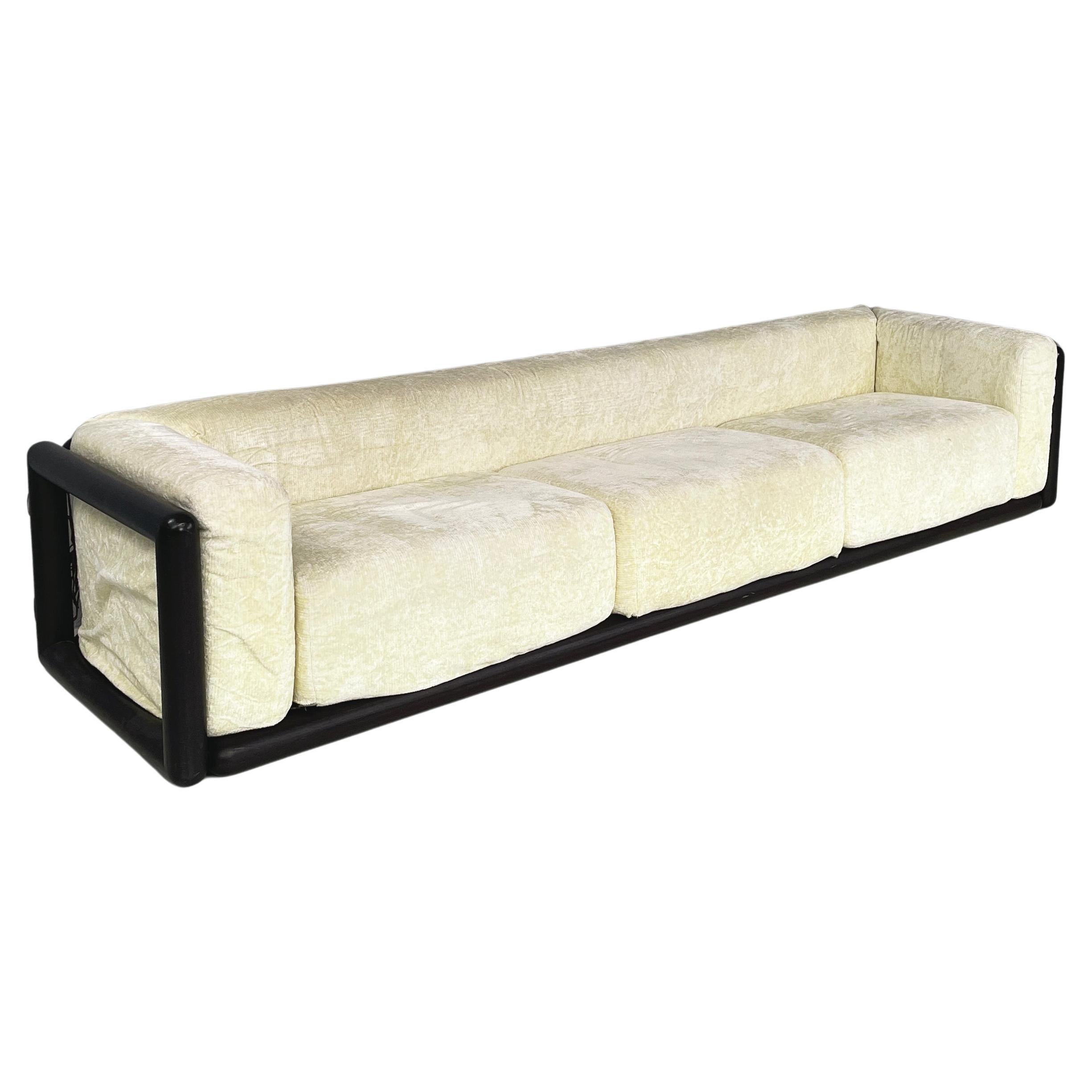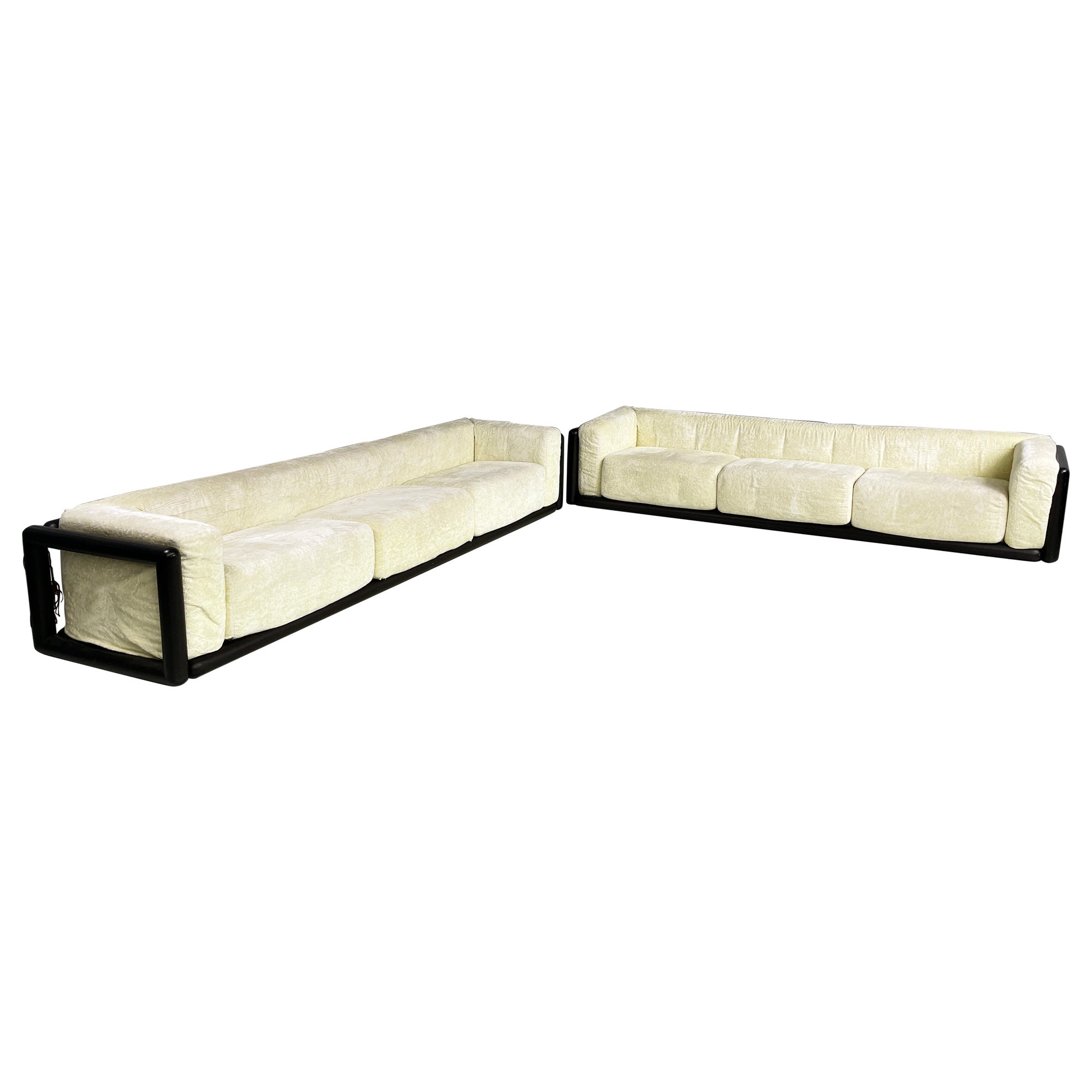Cornaro Sofa by Carlo Scarpa for Studio Simon, Italy, 1973
About the Item
- Creator:Carlo Scarpa (Designer),Studio Simon (Manufacturer)
- Dimensions:Height: 24.81 in (63 cm)Width: 118.12 in (300 cm)Depth: 31.5 in (80 cm)
- Style:Mid-Century Modern (Of the Period)
- Materials and Techniques:
- Place of Origin:
- Period:
- Date of Manufacture:1973
- Condition:Reupholstered.
- Seller Location:Melbourne, AU
- Reference Number:1stDibs: LU2201339704042
Carlo Scarpa
Carlo Scarpa was born in Venice in 1906 and became one of the leading figures of architecture and international design during the 20th century. At merely 21 years old — and still a student at the Academy of Fine Arts — Scarpa began working as a designer for master Murano glassmaker M.V.M. Cappellin. Within a few years, he completely revolutionized the approach to art glass.
In a short time, under the guidance of Scarpa, the Capellin furnace not only established itself as the top glass company, but above all it introduced modernity and international fame to Murano glassmaking. Scarpa created a personal style of glassmaking, a new vision that irreversibly changed glass production.
The young Scarpa experimented with new models and colors: his chromatic combinations, impeccable execution and geometric shapes became his modus operandi. Thanks to Scarpa’s continuous research on vitreous matter, Cappellin produced a series of high-quality glass objects, that saw the company revisiting ancient processing techniques such as the watermark and Phoenician decoration.
When he encountered the challenge of opaque glass, Scarpa proposed introducing textures of considerable chromatic impact, such as glass pastes and glazed glass with bright colors. Scarpa also collaborated in the renovation of Palazzo da Mula in Murano, the home of Cappellin. At the academy, he obtained the diploma of professor of architectural design and obtained an honorary degree from the Venice University Institute of Architecture of which he was director.
In 1931, Scarpa's collaboration with Cappellin ended, following the bankruptcy of the company because it was not able to withstand the economic crisis linked to the Great Depression. But Scarpa did not go unnoticed by Paolo Venini — in 1933, the young designer became the new artistic director of the biggest glass company in Murano.
Master glassmakers thought Scarpa's projects and sketches were impossible, but the passionate and curious designer always managed to get exactly what he wanted. Until 1947 he remained at the helm of Venini & Co., where he created some of the best known masterpieces of modern glassmaking. Scarpa’s work with Venini was characterized by the continuous research on the subject, the use of color and techniques that he revisited in a very personal way, and the development of new ways of working with master glassmakers.
At the beginning of the 1930s, "bubble", "half filigree" and "submerged" glass appeared for the first time on the occasion of the Venice Biennale of 1934. A few years later, at the Biennale and the VI Triennale of Milan, Venini exhibited its lattimi and murrine romane pieces, which were born from a joint idea between Scarpa and Paolo Venini.
In 1938 Scarpa increased production, diversifying the vases from "objects of use" to sculptural works of art. In the same year he laid the foundation for the famous "woven" glass collection, exhibited the following year. In the subsequent years, Scarpa–Venini continued to exhibit at the Biennale and in various other shows their the "black and red lacquers," the granulari and the incisi, produced in limited series, and the "Chinese," which was inspired by Asian porcelain.
Scarpa's creations for Venini garnered an international response and were a great success, leaving forever an indelible mark on the history of glassmaking. The last Biennale in which Carlo Scarpa participated as artistic director of Venini was in 1942. He left the company five years later.
The time that Scarpa spent in the most important glass factory in Murano would attach a great artistic legacy to the company. His techniques and styles were resumed in the postwar period under the guidance of Tobia Venini, Paolo's son. In the 1950s, after the departure of Scarpa, Fulvio Bianconi was the new visionary at the Biennials with Venini.
On 1stDibs, vintage Carlo Scarpa glass and lighting are for sale, including decorative objects, tables, chandeliers and more.
(Biography provided by Ophir Gallery Inc.)
- ShippingRetrieving quote...Ships From: Campbellfield, Australia
- Return PolicyThis item cannot be returned.
- Table "Bisanzio" des. Carlo Scarpa and Hiroyuki Toyoda for Simon 1973By Studio SimonLocated in Melbourne, VICElegant Dining table designed by Carlo Scarpa and produced by Simon. Following the death of Scarpa, the design was refined and finished by Hiroyuki Toyoda in conjunction with Dino ...Category
Mid-20th Century Italian Mid-Century Modern Dining Room Tables
- Soriana Lounge Chair by Afra & Tobia Scarpa for Cassina, Italy, 1970'sBy Afra & Tobia Scarpa, CassinaLocated in Melbourne, VICThe Soriana Lounge Chair, a timeless creation by Italian designers Afra and Tobia Scarpa in 1969, is a masterpiece of furniture design. Its signature features include soft, inviting ...Category
20th Century Italian Sofas
MaterialsMetal
- Environ Zero sofa by Ennio Chiggio for Nikol International, Italy, 1970'sBy Ennio ChiggioLocated in Melbourne, VICEnviron Zero sofa by Ennio Chiggio for Nikol International, Italy, 1970's. Newly Restored and upholstered in Italy.Category
Vintage 1970s Italian Mid-Century Modern Sofas
MaterialsFabric
- Saratoga Sofa Set by Massimo and Lella Vignelli for Poltronova, Italy, 1968By Poltronova, Massimo and Lella VignelliLocated in Melbourne, VICThe Saratoga sofa, designed by Massimo and Lella Vignelli for Poltronova, is a modernist masterpiece. The sofa features a bold, cubic form that is both elegant and functional, adding...Category
Vintage 1960s Italian Mid-Century Modern Sofas
MaterialsFabric, Wood, Lacquer
- Ennio Chiggio 'Environ One' Sofa for Nikol International, Italy, 1970sBy Ennio ChiggioLocated in Melbourne, VICThe Environ One Sofa by Ennio Chiggio for Nikol International, 1970, is a rare vintage piece of furniture that exemplifies the best of Mid-Century Modern desi...Category
Vintage 1970s Italian Mid-Century Modern Sofas
MaterialsWool
- ABCD 2 Seater sofa by Pierre Paulin for Artifort, Netherlands, 1969By Artifort, Pierre PaulinLocated in Melbourne, VICThe ABCD sofa, designed by Pierre Paulin in 1968, is indeed a remarkable piece of furniture that exemplifies his innovative and forward-thinking approach to design. This sofa is high...Category
20th Century Sofas
MaterialsFabric
- Carlo Scarpa Iroko Wood and Green Velvet Cornaro Sofa for Studio Simon, 1974By Studio Simon, Carlo ScarpaLocated in Vicenza, ITCornaro two-seater sofa, designed by Carlo Scarpa and manufactured by Studio Simon in 1974. Made of Iroko wood, foam, and azure chenille velvet. Excellent vintage condition. Born in Venice on June 2nd, 1906, Carlo Scarpa began working very early. Only a year after he had first qualified as an architect in 1926, he began working for the Murano glassmakers Cappellin & Co. in a consultative capacity; from 1927, he began to experiment with the Murano glass, and this research not only gave him excellent results here but would also inform his progress for many years to come. Between 1935 and 1937, as he entered his thirties, Carlo Scarpa accepted his first important commission, the renovation of Venice’s Cà Foscari. He adapted the spaces of this stately University building which stands on the banks of the Grand Canal, creating rooms for the Dean’s offices and a new hall for academic ceremonies; Mario Sironi and Mario De Luigi were charged with doing the restoration work on the frescos. After 1945, Carlo Scarpa was constantly busy with new commissions, including various furnishings and designs for the renovation of Venice’s Hotel Bauer and designing a tall building in Padua and a residential area in Feltre, all worth mentioning. One of his key works, despite its relatively modest diminished proportions, was the first of many works which were to follow in the nineteen fifties: the [bookshop known as the] Padiglione del Libro, which stands in Venice’s Giardini di Castello and shows clearly Scarpa’s passion for the works of Frank Lloyd Wright. In the years which were to follow, after he had met the American architect, Scarpa repeated similar experiments on other occasions, as can be seen, in particular, in the sketches he drew up in 1953 for villa Zoppas in Conegliano, which show some of his most promising work. However, this work unfortunately never came to fruition. Carlo Scarpa later created three museum layouts to prove pivotal in how twentieth-century museums were set up from then on. Between 1955 and 1957, he completed extension work on Treviso’s Gipsoteca Canoviana [the museum that houses Canova’s sculptures] in Possagno, taking a similar experimental approach to the one he used for the Venezuelan Pavilion at [Venice’s] Giardini di Castello which he was building at the same time (1954-56). In Possagno Carlo Scarpa was to create one of his most incredible ever works, which inevitably bears comparison with two other museum layouts that he was working on over the same period, those of the Galleria Nazionale di Sicilia, housed in the Palazzo Abatellis in Palermo (1953-55) and at the Castelvecchio in Verona (1957- 1974), all of which were highly acclaimed, adding to his growing fame. Two other buildings, which are beautifully arranged in spatial terms, can be added to this long list of key works that were started and, in some cases, even completed during the nineteen fifties. After winning the Olivetti Award for architecture in 1956, Scarpa began work in Venice’s Piazza San Marco on an area destined to house products made by the Industrial manufacturers Ivrea. Over the same period (1959-1963), he also worked on renovating and restoring the gardens and ground floor of the Fondazione Querini Stampalia in Venice, which many consider one of his greatest works. While he worked on-site at the Fondazione Querini Stampalia, Carlo Scarpa also began building a villa in Udine for the Veritti family. To shed some light on how much his work evolved over the years, it may be useful to compare this work with that of his very last building, villa Ottolenghi Bardolino, which was near completion at the time of his sudden death in 1978. Upon completion of villa Veritti over the next ten years, without ever letting up on his work on renovation and layouts, Scarpa accepted some highly challenging commissions which were to make the most of his formal skills, working on the Carlo Felice Theatre in Genoa as well as another theatre in Vicenza. Towards the end of this decade, in 1969, Rina Brion commissioned Carlo Scarpa to build the Brion Mausoleum in San Vito d’Altivole (Treviso), a piece he continued to work on right up until the moment of his death. Nevertheless, even though he was totally absorbed by work on this mausoleum, plenty of other episodes can offer some insight into the final years of his career. As work on the San Vito d’Altivole Mausoleum began to lessen in 1973, Carlo Scarpa started building the new headquarters for the Banca Popolare di Verona. He drew up plans that were surprisingly different from the work he carried out simultaneously on the villa Ottolenghi. However, the plans Carlo Scarpa drew up, at different times, for a monument in Brescia’s Piazza della Loggia commemorating victims of the terrorist attack on May 28th, 1974, make a sharp contrast to the work he carried out in Verona, almost as if there is a certain hesitation after so many mannered excesses. The same Pietas that informs his designs for the Piazza Della Loggia can also be seen in the presence of the water that flows through the Brion Mausoleum, almost as if to give a concrete manifestation of pity in this twentieth-century work of art. Carlo Scarpa has put together a highly sophisticated collection of structures occupying the mausoleum’s L-shaped space stretching across both sides of the old San Vito d’Altivole cemetery. A myriad of different forms and an equally large number of different pieces, all of which are separate and yet inextricably linked to form a chain that seems to offer no promise of continuity, arising out of these are those whose only justification for being there is to bear the warning “si vis vitam, para mortem,” [if you wish to experience life prepare for death] as if to tell a tale that suggests the circle of time, joining together the commemoration of the dead with a celebration of life. At the entrance of the Brion Mausoleum stand the “propylaea,” followed by a cloister that ends by a small chapel, with an arcosolium bearing the family sarcophagi, the central pavilion, held in place on broken cast iron supports, stands over a mirror-shaped stretch of water and occupies one end of the family’s burial space. The musical sound of the walkways, teamed with the luminosity of these harmoniously blended spaces, shows how, in keeping with his strong sense of vision, Carlo Scarpa could make the most of all his many skills to come up with this truly magnificent space. As well as an outstanding commitment to architectural work, with the many projects we have already seen punctuating his career, Carlo Scarpa also made many equally important forays into the world of applied arts. Between 1926 and 1931, he worked for the Murano glassmakers Cappellin, later taking what he had learned with him when he went to work for the glassmakers Venini from 1933 until the 1950s. The story of how he came to work on furniture design is different, however, and began with the furniture he designed to replace lost furnishings during his renovation of Cà Foscari. The later mass-produced furniture started differently, given that many pieces were originally one-off designs “made to measure.” Industrial manufacturing using these designs as prototypes came into being thanks to the continuity afforded him by Dino Gavina, who, as well as this, also invited Carlo Scarpa to become president of the company Gavina SpA, later to become SIMON, a company Gavina founded eight years on, in partnership with Maria Simoncini (whose own name accounts for the choice of company name). Carlo Scarpa and Gavina forged a strong bond in 1968 as they began to put various models of his into production for Simon, such as the “Doge” table, which also formed the basis for the “Sarpi” and “Florian” tables. In the early seventies, other tables that followed included “Valmarana,” “Quatour,” and “Orseolo.” While in 1974, they added a couch and armchair, “Cornaro,” to the collection and the “Toledo” bed...Category
Vintage 1970s Italian Mid-Century Modern Living Room Sets
MaterialsVelvet, Foam, Chenille, Wood
- Carlo Scarpa Iroko and Velvet Cornaro Sofa for Studio Simon, 1974, Set of 2By Studio Simon, Carlo ScarpaLocated in Vicenza, ITSet of 2 Cornaro two-seater sofas, designed by Carlo Scarpa and manufactured by Studio Simon in 1974. Made of Iroko wood, foam, and azure chenille velvet. Excellent vintage conditi...Category
Vintage 1970s Italian Mid-Century Modern Living Room Sets
MaterialsChenille, Velvet, Foam, Wood
- Carlo Scarpa Cornaro sofa for Simon Gavina with original fabric, Italy, 1970sBy Gavina, Carlo ScarpaLocated in Chiavari, LiguriaThe three-seater wooden and fabric sofa, model Cornaro, was designed by Carlo Scarpa for Simon Gavina in 1973. This sofa boasts a spacious and comfortable seat comprised of a series...Category
Vintage 1970s Italian Mid-Century Modern Sofas
MaterialsFabric, Wood
- Italian modern Three-seater sofa Cornaro by Carlo Scarpa for Simon Gavina, 1980sBy Carlo Scarpa, Simon Gavina EditionsLocated in MIlano, ITItalian modern Three-seater sofa Cornaro by Carlo Scarpa for Simon Gavina, 1980s Three-seater sofa mod. Cornaro with round section structure in black painted solid wood. The seat is ...Category
Vintage 1980s Italian Modern Sofas
MaterialsVelvet, Wood
- Italian modern Three-seater sofa Cornaro by Carlo Scarpa for Simon Gavina, 1980sBy Carlo Scarpa, Simon Gavina EditionsLocated in MIlano, ITItalian modern Three-seater sofa Cornaro by Carlo Scarpa for Simon Gavina, 1980s Three-seater sofa mod. Cornaro with round section structure in black painted solid wood. The seat is ...Category
Vintage 1980s Italian Modern Sofas
MaterialsVelvet, Wood
- Italian modern Three-seater sofas Cornaro Carlo Scarpa for Simon Gavina, 1980sBy Carlo Scarpa, Simon Gavina EditionsLocated in MIlano, ITItalian modern Three-seater sofas Cornaro by Carlo Scarpa for Simon Gavina, 1980s Pair of three-seater sofa mod. Cornaro with round section structure in black painted solid wood. The...Category
Vintage 1980s Italian Modern Sofas
MaterialsVelvet, Wood
